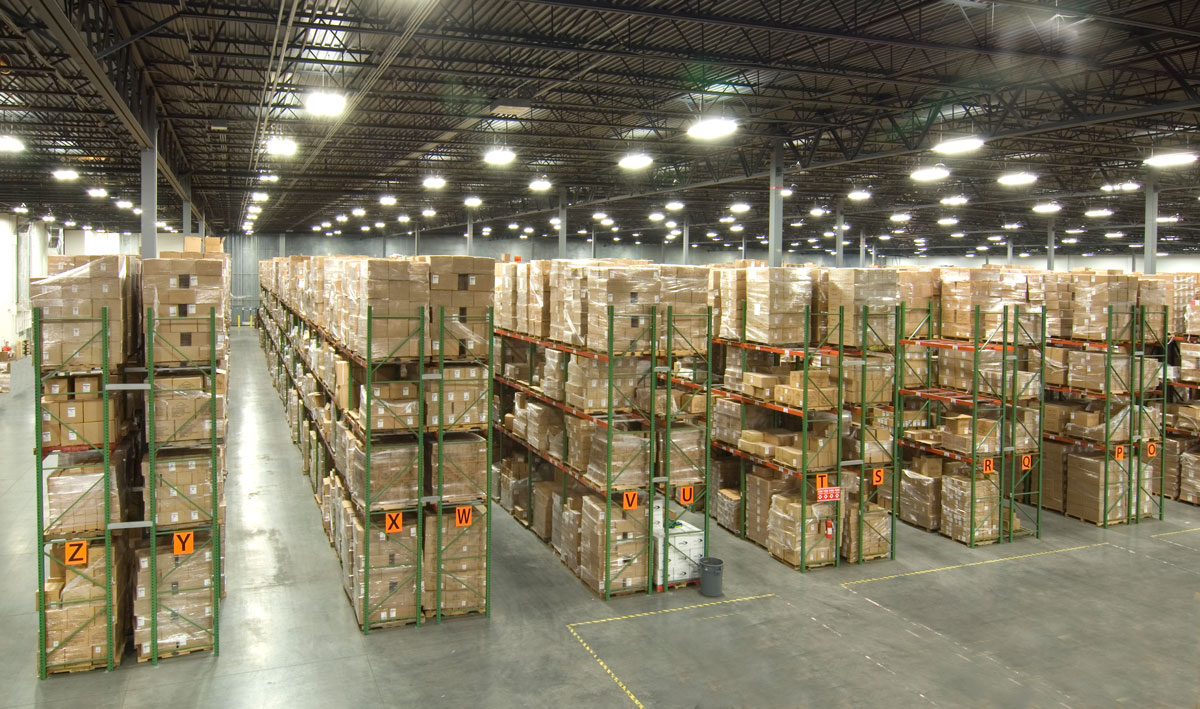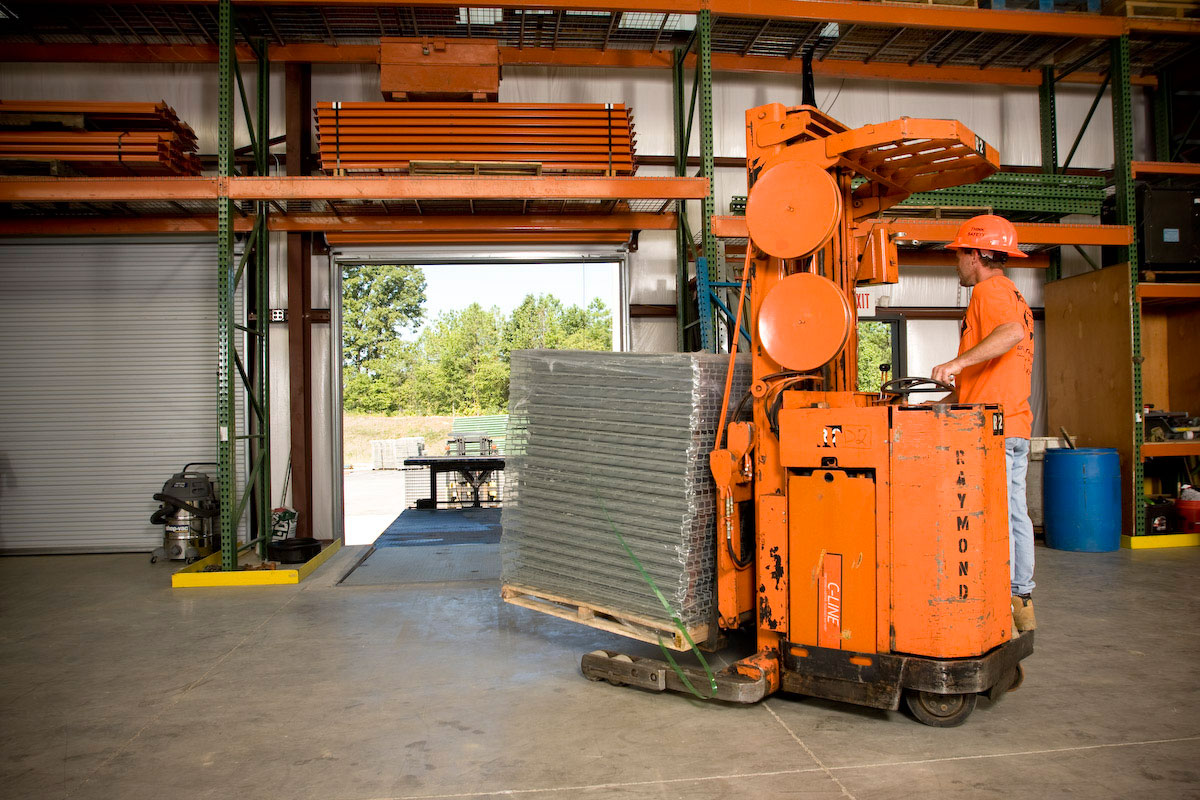Selective pallet racking systems are the most common type pallet racking systems because all pallets are accessible at any time. Accessibility and storage retrieval is high; storage density is low due to the number of aisles required. The warehouse storage racks structure consists of two vertical upright frames and two horizontal load beams per pallet level. The upright frames are designed to hold the bay’s unit load weight. Each upright base plate is anchored to the floor, and row spacing ties are used with back-to-back upright frames to provide stability. The pairs of horizontal load beams are designed with various weight capacities to hold unit loads. The connection method of the upright frame and the load beams commonly allows adjustment of the rack opening’s vertical height by about two to three-inch increments. Usually, the first pallet position is placed on the floor, with the above pallet positions resting on the load beam pairs. Selective pallet racking can be built out of either roll-formed steel or structural c-channel. Common roll-formed styles are teardrop, that offers two-inch adjustability and Keystone that offers three-inch adjustability. Other common styles are Penco, Ridg-U-Rack, Sturdi-Bilt, T-bolt and Interlake New Style. To learn more about styles of pallet racking, view our style guide.

Bridge Across Aisle/Over the Dock
Bridge across aisle storage is a variation of selective pallet rack that increases storage density by using the cube space above tunnel aisles. The design and operational characteristics are the same as those of selective pallet rack, capable of supporting the stacking weight. At Rack Men we always use wire decking on all beam levels above tunnel aisles for safety. Bridge Across Aisle


Product Accessories
Product Accessories include; wire decking, pallet supports, post protectors, pallet stop beams, anchors, netting and caging options.
– Wire decking enables racking systems to be more durable, versatile, and safe. Wire decking is a mesh network of metal that sits across load beams; this added support stabilizes pallet loads and allows for safe storage of a wide variety of material. Wire decking increases the structural stability of rack systems and safely supports pallets with a wide variety of dimensions. It is highly recommended because it offers increased access for overhead fire suppression systems, extra protection from falling debris, and better visibility for your staff. Rack Men provides outstanding wire deck products from many of the industry’s most trusted brands, such as Husky Rack and Wire and Nashville Wire Products.
– Pallet supports are cross bars placed across load beams that increase beam capacity. These cross bars sit under the pallets providing unit load reinforcement.
– Row Spacers are used to tie two back-to-back uprights together to increase their stability as one. The most common row spacers are 6 – 12 inches, sometimes wider to accommodate for larger building columns. o Wall ties will anchor a single row of pallet racking to a wall. Note that the wall must be made of concrete or cinder block in order for the wall spacer to hold, a sheet rock wall does not support wall ties.
– Safety precaution in which an extra layer of material, usually steel sometimes plastic, wraps around the base of the upright. It is designed to keep rack structurally sound and prevent buckling by diverting impact away from the protected area.
– End of aisle guards protects the pallet rack upright at the ends of aisles and through tunnels.
– Pallet stop beams attach to the uprights and prevent a pallet from being pushed off the back of the load beams with a forklift. Pallets have been pushed through a back-to-back rack system dumping unit loads into the adjacent aisle. Pallet stop beams prevent this serious safety hazard. Other purposes of pallet stop beams would be to protect water or gas lines, glass windows, etc. A pallet stop beam can be offset or flush with the back of the upright depending on the depth of the upright and the depth of your pallet.
– An anchor is a metal bolt that is drilled into the concrete floor securing the base plate of an upright to the ground; a standard pallet rack upright has a minimum one anchor per base plate. Seismic area and height of the rack system may require more anchors and larger upright base plates. OSHA requires pallet rack to be firmly anchored to a concrete floor for stability and security. The size of the anchor depends on the type of rack installed.
– Safety netting and caging is designed to keep product from falling off the load beams thereby keeping area and workers protected.



